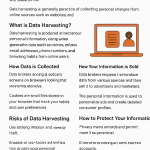Phishing attacks are more sophisticated than ever in 2025. Learn how to spot the signs, avoid scams, and protect yourself from online fraud.
Introduction
Phishing remains one of the most common and dangerous cyberattacks in 2025. Hackers no longer rely on clumsy emails full of typos; today’s phishing scams are AI-generated, personalized, and convincing.
Whether it’s an email from your “bank,” a text about a package delivery, or even a phone call using a cloned voice, phishing attempts are everywhere. In this post, you’ll learn how to spot and avoid phishing attacks, keeping your data and money safe.
📧 What Is Phishing?
Phishing is a social engineering attack where criminals trick you into revealing sensitive information, such as:
- Passwords
- Credit card details
- Social security numbers
They usually do this by pretending to be a trusted entity, like your bank, employer, or a well-known company.
👉 See a detailed explanation on phishing basics from CISA.
🔍 Common Types of Phishing Attacks
1. Email Phishing
The classic scam—fraudulent emails with fake links or attachments.
2. Spear Phishing
Targeted attacks against specific individuals or organizations. Example: An email crafted for a company executive.
3. Smishing (SMS Phishing)
Texts claiming you missed a delivery or need to verify your account.
4. Vishing (Voice Phishing)
Phone calls pretending to be from banks or government agencies, often using AI voice cloning.
5. Clone Phishing
Hackers copy a legitimate email but replace links or attachments with malicious ones.
⚠️ Warning Signs of Phishing
- Urgent language: “Your account will be locked in 24 hours.”
- Slight misspellings in email addresses (e.g., “paypa1.com”).
- Unusual requests for sensitive info.
- Unexpected attachments.
- Links that don’t match the official website.
Pro Tip: Hover over links before clicking—check if the URL matches the sender’s claim.
🛡️ How to Protect Yourself from Phishing
- Use Multi-Factor Authentication (MFA): Even if your password is stolen, hackers can’t log in without the second factor.
- Keep Software Updated: Many phishing emails exploit outdated systems.
- Train Employees: Companies should run phishing simulations to boost awareness.
- Use Spam Filters: Advanced filters detect suspicious senders before emails reach you.
- Check the Sender’s Domain: Fraudulent addresses often look almost—but not exactly—like real ones.
🚨 What to Do If You’re a Victim
- Don’t panic. Immediately change your passwords.
- Enable account recovery. Use backup email or phone verification.
- Report the phishing attempt.
- FTC Report (for U.S. users)
- Report to your bank or email provider.
- Run a malware scan. Make sure your device isn’t infected.
✅ Conclusion
Phishing may have evolved in 2025, but awareness is still your strongest weapon. By recognizing the signs, practicing safe online habits, and using tools like MFA, you can significantly reduce your risk.










